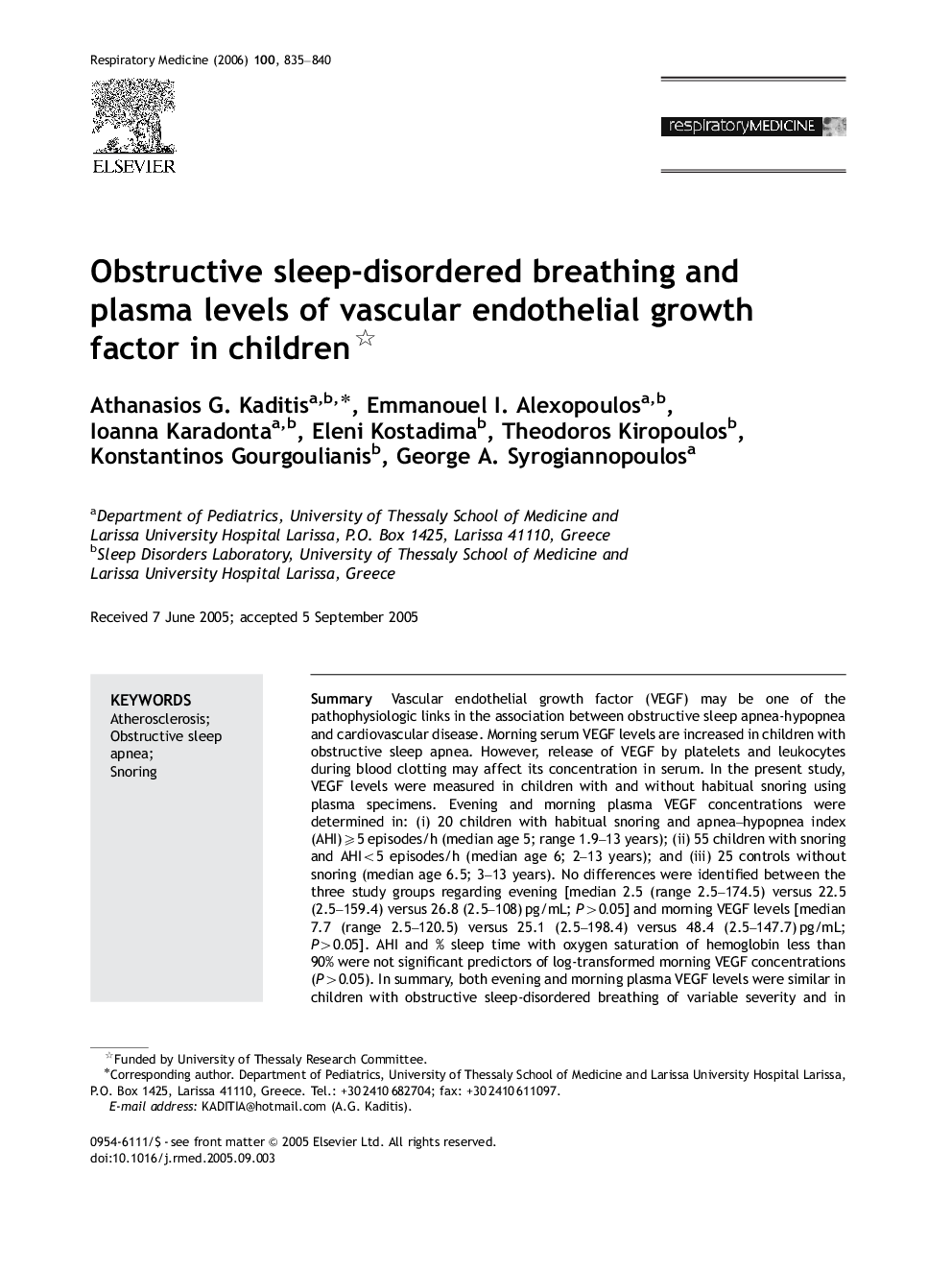| Article ID | Journal | Published Year | Pages | File Type |
|---|---|---|---|---|
| 4212363 | Respiratory Medicine | 2006 | 6 Pages |
SummaryVascular endothelial growth factor (VEGF) may be one of the pathophysiologic links in the association between obstructive sleep apnea-hypopnea and cardiovascular disease. Morning serum VEGF levels are increased in children with obstructive sleep apnea. However, release of VEGF by platelets and leukocytes during blood clotting may affect its concentration in serum. In the present study, VEGF levels were measured in children with and without habitual snoring using plasma specimens. Evening and morning plasma VEGF concentrations were determined in: (i) 20 children with habitual snoring and apnea–hypopnea index (AHI)⩾5 episodes/h (median age 5; range 1.9–13 years); (ii) 55 children with snoring and AHI<5 episodes/h (median age 6; 2–13 years); and (iii) 25 controls without snoring (median age 6.5; 3–13 years). No differences were identified between the three study groups regarding evening [median 2.5 (range 2.5–174.5) versus 22.5 (2.5–159.4) versus 26.8 (2.5–108) pg/mL; P>0.05P>0.05] and morning VEGF levels [median 7.7 (range 2.5–120.5) versus 25.1 (2.5–198.4) versus 48.4 (2.5–147.7) pg/mL; P>0.05P>0.05]. AHI and % sleep time with oxygen saturation of hemoglobin less than 90% were not significant predictors of log-transformed morning VEGF concentrations (P>0.05P>0.05). In summary, both evening and morning plasma VEGF levels were similar in children with obstructive sleep-disordered breathing of variable severity and in controls without snoring. VEGF may not play an important pathophysiologic role in all cases of obstructive sleep-disordered breathing in childhood.
